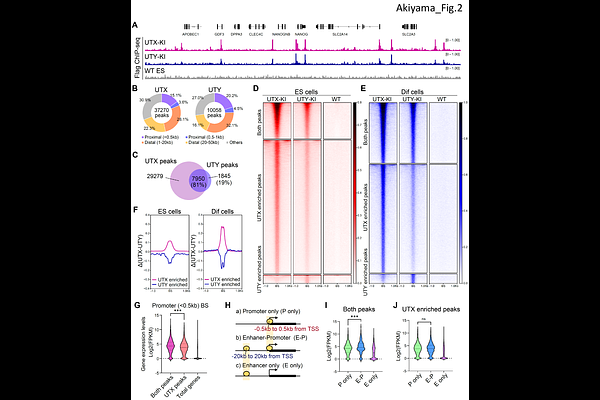Functional redundancy between UTY and UTX in regulating the localization of transcription factors involved in pluripotency

Functional redundancy between UTY and UTX in regulating the localization of transcription factors involved in pluripotency
Akiyama, T.; Nakahara, T.; Sato, S.; Ishiguro, K.-i.; Yukawa, M.; Yamamoto, M.; Takahashi, H.; Ko, M. S.
AbstractThe Y chromosome harbors few protein-coding genes, and their roles in early human development remain largely unclear. Here, we demonstrate that UTY, a Y-linked homolog of the histone demethylase UTX, plays a critical, demethylase-independent role in maintaining pluripotency in human embryonic stem cells (hESCs). Despite its low expression and weak enzymatic activity, UTY co-occupies active cis-regulatory elements with UTX and promotes the transcription of key pluripotency genes, including NODAL and LEFTY. Integrated genomic analyses of single and double knockout hESCs reveal that UTY and UTX function redundantly to maintain chromatin accessibility and ensure proper recruitment of core transcription factors such as OCT4 and SOX2. The combined loss of UTY and UTX disrupts transcription factor localization, induces widespread gene expression changes, and leads to a collapse of the pluripotent state, without detectable changes in H3K27 methylation. Instead, these defects are associated with impaired recruitment of ATP-dependent chromatin remodelers and reduced histone acetylation, suggesting a demethylase-independent mechanism. Our findings uncover an essential role for the evolutionarily conserved UTY in safeguarding enhancer function and transcription factor occupancy, highlighting Y-linked regulatory mechanisms that are critical for maintaining human pluripotency.